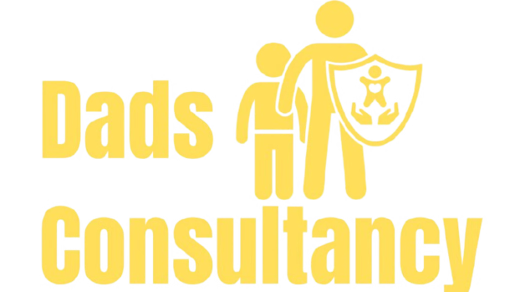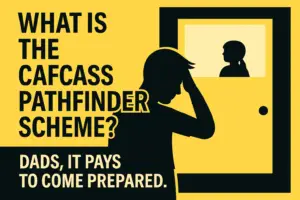The First Hearing Dispute Resolution Appointment (FHDRA) is one of the first major milestones in the family court process. It’s where child arrangement cases officially kick off – and where early decisions can shape the entire case.
But for most dads, the FHDRA feels like unfamiliar territory. Who will be there? What should you say? Can you actually get contact at this stage?
This guide walks you through what happens at the FHDRA, how to prepare, what outcomes are possible – and how to avoid early mistakes that can cost you valuable time with your child.
Jump to:
- What Is the FHDRA?
- What Happens Before the Hearing
- What to Expect on the Day
- Can You Get Contact at FHDRA?
- How to Prepare for the FHDRA (Practically and Emotionally)
- Position Statements & C7 Forms
- What Happens After the FHDRA?
- FAQs
- Conclusion
What Is the FHDRA?
FHDRA stands for First Hearing Dispute Resolution Appointment. It’s the first formal court hearing in a private law case involving children, usually triggered by a C100 application.
The purpose of the FHDRA is to:
- Identify the key issues in the case
- Consider any safeguarding concerns
- Encourage early agreement (if safe to do so)
- Decide what should happen next (e.g. reports, fact-finding, contact order)
It’s where your case starts to take shape – and the first time the court gets a full picture of both sides.
What Happens Before the Hearing
Before you get to court, several key steps take place:
1. Gatekeeping and Allocation
Your application (C100) is reviewed by the Gatekeeping Team – a legal adviser and/or judge. They decide:
- What level of judge is needed (Magistrates or District Judge)
- Whether CAFCASS should be involved
- If the case needs any immediate directions
You’ll receive:
- A sealed copy of your C100 (and C1A if completed)
- Notice of Hearing (C6)
- Gatekeeping and Allocation Order
The other parent (the respondent) will receive:
- The above documents
- A blank C7 form (Acknowledgement of Service)
- A blank C1A form (optional: to raise safeguarding concerns)
2. CAFCASS Safeguarding Checks
CAFCASS will:
- Run checks with police and social services
- Call both parents for a short safeguarding interview
- Draft a safeguarding letter for the court
This letter will:
- Summarise each parent’s position
- Flag any risk concerns
- Recommend whether contact should be allowed (and on what basis)
👉 Need help preparing for the CAFCASS safeguarding call? Read our guide.
What to Expect on the Day
The FHDRA is usually held in a private family court (or sometimes remotely by phone or video). You’ll likely be joined by:
- The judge or magistrates
- The other parent (and any legal reps)
- A CAFCASS Family Court Adviser (if involved)
Can I bring someone with me?
Yes – you can bring a McKenzie Friend to support you. They can’t speak on your behalf unless the judge gives permission, but they can help you stay calm, take notes, and offer quiet advice during the hearing.
Here’s what typically happens:
- The court reviews the safeguarding letter
- Each party briefly outlines their position
- CAFCASS offers recommendations (if available)
- The court explores whether agreement is possible
- If not, next steps are set (e.g. Section 7 report, fact-finding hearing)
The hearing usually lasts 30–60 minutes, depending on how complex things are.
Can You Get Contact at FHDRA?
Yes – in many cases, the FHDRA is where you can ask for interim contact. This is especially relevant if:
- You’ve had no contact at all
- There are no serious safeguarding concerns
- The child has an existing bond with you
The judge may:
- Order indirect contact (e.g. video calls, letters)
- Propose supervised visits
- Make a short-term interim child arrangements order
This contact will usually stay in place until the next hearing.
How to Prepare for the FHDRA (Practically and Emotionally)
This isn’t just a legal process – it’s an emotional one. Here’s how to show up calm, credible, and child-focused:
- Bring a short position statement summarising your story and what you’re asking for
- Stay calm and respectful throughout – the judge is assessing tone, not just content
- Avoid criticising the other parent – focus on how your child benefits from a calm, cooperative setup
- Expect curveballs – especially if allegations have been raised
- Be ready to show willingness (e.g. to try mediation, supervised contact, etc.)
👉 Need help writing your Position Statement or preparing for the hearing? Get 1:1 support here.
Position Statements & C7 Forms
Before the FHDRA, you’ll come across two key documents that shape how the court and CAFCASS first view your case. One is a required response – the other is an optional tool that can seriously strengthen your position. Here’s what they are, why they matter, and how to use them effectively.
- C7 Form – This is how the respondent acknowledges they’ve received your application. It’s also where they state if they oppose it.
- Position Statement – While optional, this is your chance to:
- Outline your contact history and proposals
- Respond to any allegations
- Show you’re child-focused and solution-oriented
CAFCASS and the judge may refer to this before or during the hearing.
What Happens After the FHDRA?
Depending on how the hearing goes, the judge may:
- Encourage both parties to agree a contact plan that day
- Make an interim order (if agreement isn’t reached)
- Order further steps, such as:
- A Section 7 report (CAFCASS)
- A fact-finding hearing (if serious allegations exist)
- Parenting programmes or mediation
You’ll usually get a court order outlining what was decided – plus a date for the next hearing.
FAQs
The first court hearing comes with a lot of unknowns – and dads often get hit with confusing forms, unfamiliar terms, and last-minute pressure to “be ready.” Below are answers to the most common questions fathers ask us about the FHDRA, CAFCASS, and what the court actually expects on the day.
These aren’t generic legal definitions – they’re practical insights based on real experience helping dads through family court.
How long does an FHDRA last?
Typically 30–60 minutes, but timing can vary depending on complexity.
Can I speak at the FHDRA?
Yes – either directly or with support from a McKenzie Friend. Keep it clear, child-focused, and respectful.
Do I need to attend in person?
Check your hearing notice. Some FHDRA hearings are remote, others are in person. Either way, you must attend.
Can I bring evidence to the FHDRA?
It’s not usually an evidential hearing, but you can refer to notes or timelines. Save formal evidence for later hearings unless requested.
What if I miss the safeguarding call before the hearing?
CAFCASS may speak to you on the day. It’s not ideal, but it won’t automatically count against you.
What if we agree at FHDRA?
Brilliant – the court can record your agreement as a legally binding order.
Conclusion: Be Prepared, Stay Composed
The FHDRA might feel intimidating – but it’s also an opportunity. It’s your chance to show the court that you are ready to co-parent constructively – or explain why that’s not possible.
With the right support and preparation, many dads make real progress at this early stage – even in high-conflict cases.
🧠 Insider Insight: Lach, our founder, is a qualified social worker who used to write Section 7 reports for CAFCASS – the very reports that influence court outcomes. Now he helps dads prepare for safeguarding calls and respond to false allegations. Learn more about Lach’s background.
👉 Book a free consultation and get help preparing for your CAFCASS safeguarding interview
Or learn more about how Dad’s Consultancy supports fathers at every stage of the family court process.




